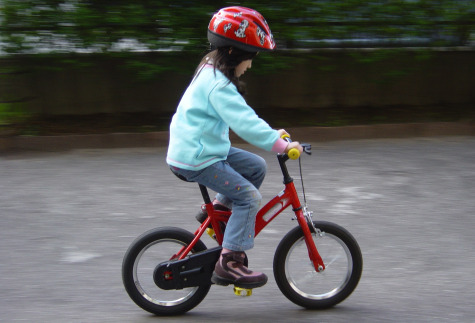Christmas doesn't usually make the average person think about children's health, but it is the perfect opportunity to encourage healthful activities for your kids. Consider these fun children's gifts this Christmas season when you are battling the holiday shoppers!
1. Bicycle

This might seem like a no-brainer, but a new bicycle (or tricycle,
depending on your little one's age) is an oldie-but-goodie when it comes to
Christmas presents. Getting a bike will encourage your child to get outside and
away from a screen, and to engage in that much needed physical activity. Just
be sure to purchase a helmet to go along with it!
2. Tether Ball

A tether ball system is another way to get kids to engage in physical activity that doesn't seem like exercise. This will also encourage social interaction, as tether ball is a two-person game. A tether ball system is the perfect gift for siblings.
3. Crawling Tunnels

Crawl tunnels, play tents, and pop-up huts are all a great gift
idea for children. Not only are they light and portable so that they don't take
up a lot of space, they encourage active play inside. This is perfect for those
stormy days when the kids can't go outside. There are a variety of options to
choose from as well, from Frozen tents to Wiggly Worm tunnels.

Just Dance and other games like it are a fun and interactive way
for children to play video games. These games improve coordination and are a
lot of fun! They can be an individual or group activity, and appeal to all
ages.

Buying your children interesting dishes can help them get excited
about meals. Let them help you pick out some individualized dishware so that
they feel included and more willing to participate in mealtime.

Safe trampolines are great for giving kids an outlet for their
energy. People who live in mild climates can spring for the outdoor version,
while those who live in snowy or rainy areas can choose indoor trampolines.
Both will work for letting kids jump out their wiggles. You can even get small
indoor trampolines with handles for the tiny tykes.

If you're willing to spend money on a big ticket item, a play set
is the way to go. There are many variations: swings, monkey bars, slides, rope
swing, etc. You can even find compact indoor variations. They can last for
years and provide a prime place for your kids to play and be active.
This list just includes some ideas for Christmas presents that
promote fun, physical activity. There are many other options! As long as your gift
will get your children moving (safely), then you really can't go wrong!
Sources:
http://schoolrun.files.wordpress.com/2011/05/child-on-bike.jpg
http://feeds2.yourstorewizards.com/1749/images/300x300/tetherball.jpg
https://unitedwaybroome.files.wordpress.com/2011/07/86510161_cropped.jpg
http://ourthreepeas.com/blog/wp-content/uploads/2014/11/just-dance2.jpg
http://blog.chw.org/wp-content/uploads/trampoline_safety_blog2.jpg
http://s3-production.bobvila.com/blogs/wp-content/uploads/2012/07/blog_bv_swingset_playset2_kids_creations.jpg











